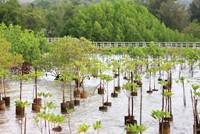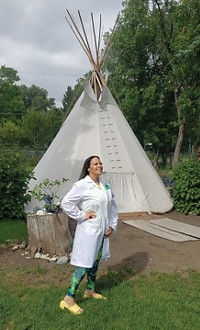Advertisement
Grab your lab coat. Let's get started
Welcome!
Welcome!
Create an account below to get 6 C&EN articles per month, receive newsletters and more - all free.
It seems this is your first time logging in online. Please enter the following information to continue.
As an ACS member you automatically get access to this site. All we need is few more details to create your reading experience.
Not you? Sign in with a different account.
Not you? Sign in with a different account.
ERROR 1
ERROR 1
ERROR 2
ERROR 2
ERROR 2
ERROR 2
ERROR 2
Password and Confirm password must match.
If you have an ACS member number, please enter it here so we can link this account to your membership. (optional)
ERROR 2
ACS values your privacy. By submitting your information, you are gaining access to C&EN and subscribing to our weekly newsletter. We use the information you provide to make your reading experience better, and we will never sell your data to third party members.
Education
Students want more climate change education. Their teachers and professors are starting to listen
Spurred by activism, educators are reworking curricula to train future generations to adapt to our changing climate
by Gina Vitale
February 10, 2020
| A version of this story appeared in
Volume 98, Issue 6

For 16-year-old Sonja Michaluk, climate education began years before she enrolled in high school.
She spent much of her childhood with her father on the shore of the Delaware River, and some of her earliest memories are flipping soggy logs in search of critters or scouring the dewy riverside for a passing turtle. In the lush woods behind her elementary school, a botanist turned teacher explained how Michaluk and her classmates shared the natural resources around them with the birds, the fish, and every other component of the ecosystem. Now, in addition to attending high school, she’s a state-certified biological water monitor and has collected official data for the New Jersey Department of Environmental Protection.
Unlike previous generations, Michaluk and students her age have been aware of climate change and its consequences—the loss of life and property due to extreme weather events, for example—for most of their lives. Michaluk and others see hope in education. The more people know about how climate change affects the environment, the better they can conceive of ways to combat or adapt to it. Thanks to youth activists like Greta Thunberg, this way of thinking has begun to spread.
Podcast: 5 young climate scientists share their reasons for hope
Climate change is on the public’s mind, thanks in no small part to protests and rallies led by young people around the world. In the latest episode of Stereo Chemistry, host Kerri Jansen talks to early-career researchers developing the tools and knowledge we’ll need to thrive in a changing climate. These scientists have already been living with climate change—and they expect to be the first generation to experience some of its worst effects. They share what drew them to climate science and what keeps them motivated when the questions—and the obstacles—are so vast. A transcript of this episode is available here.
In August 2019, Michaluk and student scientists from dozens of other countries gathered in Stockholm for the Malin Falkenmark Young Scientist Symposium on Climate Change. Together, they drafted a statement calling not only for solutions to climate change and a heightened focus on adapting to climate change–related consequences in the environment but also for an increase in climate-related curricula in colleges and high schools.
“We must focus on sustainability” and encourage the inclusion of climate sciences in traditionally separate subjects such as math, chemistry, and social science, they write in the statement, which was later presented to the United Nations. “So, whether we become an entrepreneur, politician, scientist, shopkeeper or farmer, we all know we have a responsibility, we all know we have a role to play.”
At least one school in Washington, DC, is already heeding these demands. Last summer, Lowell School partnered for the first time with the National Oceanic and Atmospheric Administration (NOAA) Climate Program Office to host the Summer Institute for Climate Change Education, an annual event organized by the nonprofit Climate Generation: A Will Steger Legacy. The 3-day symposium serves to help teachers find new ways to incorporate climate change into their curricula. In this case, the teachers in attendance learned about how to teach climate change in the humanities.
At Lowell, the faculty believe it’s important for their students to view climate change in the context of history, economics, and social studies in addition to science. In language arts courses, students read books related to climate change and the environment. One such book, The Boy Who Harnessed the Wind, is about a child who builds a windmill to help his village. In history, they learn how the Industrial Revolution and the invention of railroads spurred carbon dioxide levels to rise in the atmosphere across the globe. For the second year, current sixth grade students will take a field trip to Tangier Island, a parcel of land on the Chesapeake Bay, to see how residents are already dealing with a rise in sea level.
The teacher-training course emphasized how people’s personal stories of their experiences with climate change, such as large storms, can help students connect with the material and see how it relates to their own lives, says Natalie Stapert, a humanities coordinator and middle school language arts teacher at Lowell. She and other educators at the school hope those stories will inspire students to advocate for their environment and seek out ways to adapt to a changing climate.
The focus on climate change adaptation has also begun to seep into higher education. In 2014, civil and environmental engineering faculty at Carnegie Mellon University acknowledged the growing need for updated infrastructure in the face of new climate-related weather changes. In response to this need, they created a climate change adaptation concentration for graduate students in the civil and environmental engineering program.
Tania Lopez, a PhD student in the program, is focusing on stormwater drainage systems. Thanks to climate change, extreme rainfall has become more common and more debilitating in many parts of the world. When drainage systems can’t keep up, the heavy rain can lead to severe flooding. In Pittsburgh, a 2011 flash flood claimed the lives of four people who were trapped in their vehicles. “The infrastructure was clearly not adequate,” department head David Dzombak says.
Lopez aims to identify ways that drainage systems can be built or modified to accommodate future extreme rainfall. She uses climate models to predict which regions will be most affected and targets her research accordingly.
Yuchuan Lai, also a PhD candidate in the program, is compiling temperature and precipitation data points for more than 100 US cities for the purpose of communicating them to the engineers building infrastructure there. Lai says engineers are still building stormwater drainage systems and heating, ventilating, and air-conditioning units designed for decades-old weather patterns that no longer hold. Engineers need to work with more up-to-date information. Building designs are in particular need of an upgrade, Dzombak says.
As far as associate civil and environmental engineering professor Constantine Samaras is aware, CMU is the only university in the US to offer a course in how to specifically design infrastructure for climate change adaptation.
“We want something like this to be diffused everywhere,” says Samaras, speaking of CMU’s course on climate change adaptation for infrastructure. “And I think eventually it will be.”
That sentiment resonates with 16-year-old Michaluk. As people her age are starting to learn about climate change, she feels a powerful sense of responsibility to carry the environmental movement forward.
“Previous generations haven’t gotten the same education on climate change as mine,” Michaluk says. “I feel like it’s almost the duty of this generation to step forward.”




Join the conversation
Contact the reporter
Submit a Letter to the Editor for publication
Engage with us on Twitter